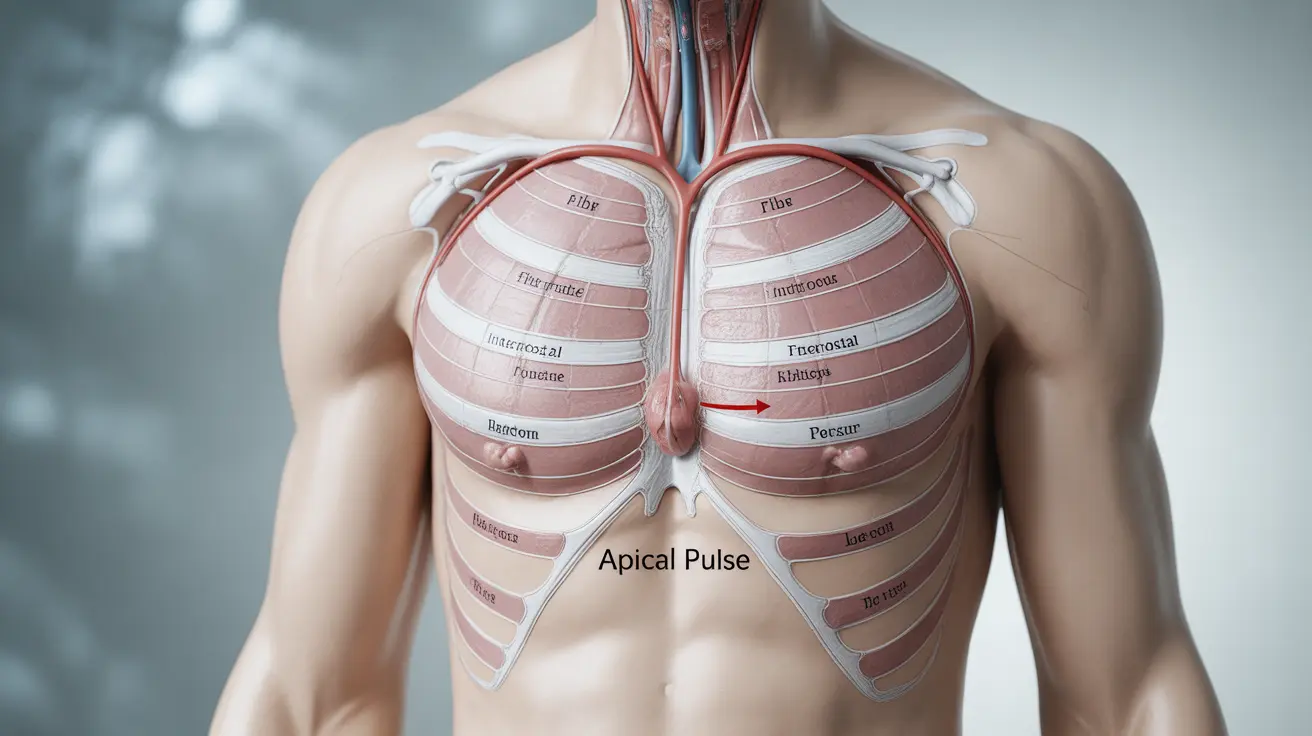The apical pulse is a crucial vital sign that provides healthcare providers with valuable information about your heart's function and overall cardiovascular health. Located directly over the heart's apex, or pointed tip, this pulse measurement offers precise insights that other pulse readings might miss.
Understanding the significance of the apical pulse and how it's measured can help you better comprehend your medical care, particularly if you have a heart condition or are caring for a child. Let's explore this important vital sign in detail.
Location and Significance of the Apical Pulse
The apical pulse is found in the fifth intercostal space, on the left side of the chest, typically near the midclavicular line. This specific location corresponds to where the heart's apex makes contact with the chest wall, providing the most direct measurement of cardiac activity.
This pulse point is particularly significant because it offers the most accurate representation of the heart's actual contractions, making it invaluable for detecting subtle irregularities in heart rhythm and rate.
Proper Measurement Techniques
Healthcare providers follow specific steps to ensure accurate apical pulse measurement:
- Position the patient properly (usually lying at a 45-degree angle)
- Locate the correct intercostal space
- Use a stethoscope to listen for heart sounds
- Count the heartbeats for a full minute
- Note any irregularities in rhythm or strength
The measurement typically takes place in a quiet room to ensure the healthcare provider can hear the heart sounds clearly and accurately.
Clinical Importance for Special Populations
Children and Infants
The apical pulse is the preferred method for measuring heart rate in children under 2 years of age. This is because their peripheral pulses can be more difficult to detect, and the apical pulse provides the most reliable reading of their true heart rate.
Patients with Heart Conditions
For individuals with known cardiac issues, the apical pulse offers several advantages:
- More accurate detection of irregular rhythms
- Better assessment of medication effects
- Clearer indication of heart strength
- Earlier identification of potential complications
Comparing Pulse Points
While the radial pulse (measured at the wrist) is commonly used for quick assessments, the apical pulse offers distinct advantages:
- Direct measurement of heart contractions
- Better detection of subtle rhythm changes
- More accurate in cases of poor peripheral circulation
- Essential for precise medication timing
When Apical Pulse Assessment is Critical
Healthcare providers particularly rely on apical pulse measurements in several situations:
- Before administering certain cardiac medications
- When monitoring patients with known heart conditions
- During pediatric assessments
- In cases where peripheral pulses are weak or difficult to detect
- When evaluating the effectiveness of heart medications
Frequently Asked Questions
What is the apical pulse and where is it located on the body? The apical pulse is the heartbeat measured directly over the heart's apex, located in the fifth intercostal space on the left side of the chest, near the midclavicular line.
How do healthcare providers accurately measure the apical pulse? Healthcare providers use a stethoscope placed at the fifth intercostal space, counting heart sounds for a full minute while the patient is positioned at a 45-degree angle in a quiet environment.
Why is the apical pulse important for children and patients with heart conditions? The apical pulse provides the most accurate heart rate measurement in children under 2 years and allows healthcare providers to detect subtle changes in heart rhythm and medication effectiveness in cardiac patients.
What can an irregular apical pulse indicate about heart health? An irregular apical pulse can indicate various cardiac issues, including arrhythmias, heart valve problems, or changes in heart function that might not be detected through peripheral pulse measurements.
How does the apical pulse differ from the radial pulse and why is this comparison important? The apical pulse provides a direct measurement of heart contractions, while the radial pulse is a peripheral measurement. This difference is important because the apical pulse offers more accurate readings for medication timing and detecting subtle cardiac irregularities.




